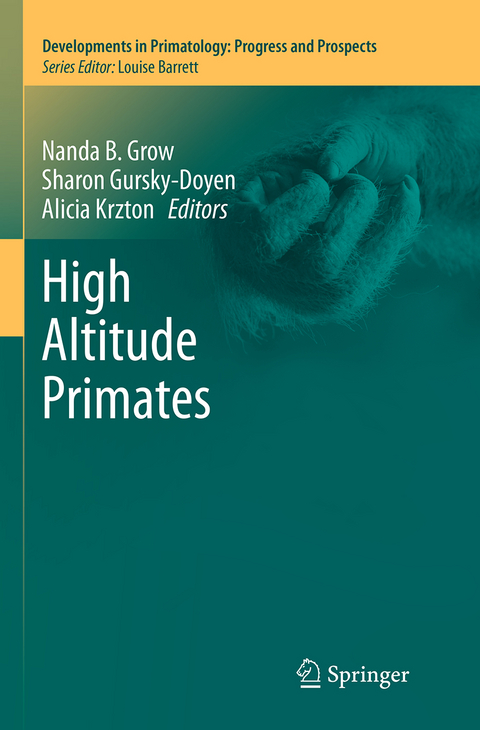
High Altitude Primates
Springer-Verlag New York Inc.
978-1-4939-5283-0 (ISBN)
High Altitude Prosimian Primates.- 1. Effects of Altitude on the Conservation Biogeography of Lemurs in South East Madagascar.- 2. Hibernation patterns of dwarf lemurs in the high altitude forests of eastern Madagascar.- 3. Altitudinal Distribution and Ranging Patterns of Pygmy Tarsiers (Tarsius pumilus).- High Altitude Monkeys.- 4. Biogeography and conservation of Andean primates in Peru.- 5. Population density and ecological traits of high land woolly monkeys at Cueva de los Guacharos National Park, Colombia.- 6. Seed Dispersal by Woolly Monkeys in Cueva de los Guacharos National Park (Colombia): An amazonian primate dispersing montane plants.- 7. Distribution and ecology of the most tropical of the high-elevation montane colobines: the ebony langur on Java.- 8. Snow tolerance of Japanese macaques inhabiting high-latitude mountainous forests of Japan.- 9. Seasonal and altitudinal migration of Japanese macaques in the Northern Japan Alps.- 10. Rhinopithecus bieti at Xiaochangdu, Tibet: Adaptations to a marginal environment.- 11. Nutritional implications of the high-elevation lifestyle of Rhinopithecus bieti.- 12. Variation in primate abundance along an elevational gradient in the Udzungwa.- 13. Deriving Conservation Status for a High Altitude Population: Golden Monkeys of Mgahinga Gorilla National Park, Uganda.- High Altitude Apes.- 14. High Altitude Diets: Implications for the Feeding and Nutritional Ecology of Mountain Gorillas.- 15. Preliminary data on the highland Sumatran orangutans (Pongo abelii) of Batang Toru.- 16. Modern Human Biological Adaptations to High-Altitude Environments in the Andean ArchaeologicalRecord.-17. High Altitude Primates, Extreme Primates, and Anthropological Primatology (There is More to Human Evolution than Tool Use, Culture, or African Apes).
| Erscheinungsdatum | 07.09.2016 |
|---|---|
| Reihe/Serie | Developments in Primatology: Progress and Prospects |
| Zusatzinfo | 61 Illustrations, black and white; XXI, 360 p. 61 illus. |
| Verlagsort | New York |
| Sprache | englisch |
| Maße | 155 x 235 mm |
| Themenwelt | Naturwissenschaften ► Biologie ► Evolution |
| Naturwissenschaften ► Biologie ► Ökologie / Naturschutz | |
| Naturwissenschaften ► Biologie ► Zoologie | |
| ISBN-10 | 1-4939-5283-8 / 1493952838 |
| ISBN-13 | 978-1-4939-5283-0 / 9781493952830 |
| Zustand | Neuware |
| Haben Sie eine Frage zum Produkt? |
aus dem Bereich


